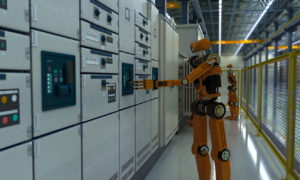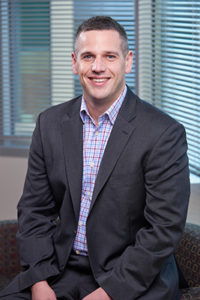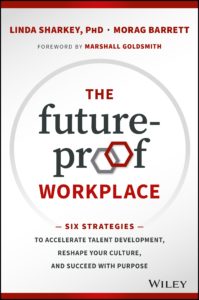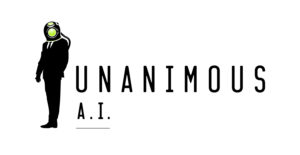How to Robot-Proof Your Future Career
Technology is driving change throughout the world’s corporations — faster than we imagined. Software automation, robots, and artificial intelligence (AI) may replace millions of jobs. Are you preparing for those changes? Here’s what you need to know.
By Stephen Dupont, APR, Vice President, Pocket Hercules
When I head to the local grocery store, instead of having a choice of four check out lanes with actual people to check through groceries (which were there prior to the store’s recent renovation), today there are four self-serve check-out stations with one person to help customers.
That’s three fewer employees than a year ago.
Throughout the work world, from manufacturing and mining, to retailing and white-collar professions, including segments such as law, accounting, and advertising/public relations, software automation is making workplaces more productive and cost efficient. In the process, it’s changing not only how we work, but also the number of people with whom we work to satisfy customer needs.
By 2020, the business consulting firm Gartner Inc. predicts:
- More than 1 billion global workers will be affected by algorithms incorporated by businesses to positively alter the behavior of workers.
- The average person will have more conversations with a “bot” (or virtual assistant) than with a spouse. In other words, online searches for information will become voice-activated (Amazon’s Alexa voice service, Apple’s Siri voice service) instead of screen based.
- At least 100 million consumers will shop in augmented realities. Imagine shopping for cereal and seeing nutrition data floating in the air above each item with the aid of special glasses worn by consumers.
The question is: Are you preparing to adapt to the technological changes barreling toward you? Or, as a business owner, can you incorporate new technology into your operations and think about the costs of minimizing human interaction between your business and its customers?

Some wonder how far technology will take us. Will even high-level positions – such as the work of a surgeon — be replaced by artificial intelligence (AI), or droids in the workplace? As a patient, would you feel more comfortable being operated on by a robot or a human?
While this may sound like a stretch, ponder this: a March 2017 study (Will Robots Steal Our Jobs?) by PricewaterhouseCoopers (PwC) predicts that 38 percent of today’s positions in the United States will be replaced by software automation or artificial intelligence by the early 2030s. You need only look at your local grocery store or big box retailer to see this is already happening. From the PwC report, note this statement:
“While traditional machines, including fixed location industrial robots, replaced our muscles (and those of other animals like horses and oxen), these new smart machines [intelligent virtual assistants like Siri, Alexa and Cortana, and Japanese healthcare robots] have the potential to replace our minds and to move around freely in the world driven by a combination of advanced sensors, GPS tracking systems and deep learning, if not now then probably within the next decade or two.”
If you wonder about the possibility of robots in the workplace, I invite you to check out some of the videos on YouTube by Boston Dynamics. Robot delivery droids? Robot soldiers, firefighters, and police officers?
Can Technology Replace Humans?
Eric Chase, a director with the strategic consulting firm Toffler Associates (founded by Future Shock author and futurist Alvin Toffler), says AI won’t be replacing human insight any time soon. Rather, the “marriage” between AI and humans will create a powerful relationship that leverages the strengths of each. Why?

“From a purely economic sense,” Chase says, “the costs of smart technology continue to go down, making it more attractive for businesses to incorporate smart technology into their businesses. However, artificial intelligence can’t conceptualize like humans. A.I. won’t be replacing human judgment – or empathy – anytime soon. I don’t think we will see A.I. supplant the contextual insights that humans can bring to data. But I do think we will see a relationship emerge where the power of A.I. computing and deep learning takes a more prominent role in curating ever-growing amounts of data and information so we can spend more time with the ‘so-what?’ and ‘what’s next?’”
With the explosion of accessible data generated through more powerful computing systems to the Internet of Things (an estimated 20 billion “things” will be connected to the Internet within the next three years), Chase believes that “human judgment will be needed more than ever before.”
“Access to more data doesn’t necessarily translate to exercising more control over your world,” says Chase, “we will need talented, experienced people to help organizations interpret meaning in the ‘signals’ AI can help us discover and separate from the vast amount of ‘white noise’.”
Disruption Ahead
No doubt driverless vehicles will disrupt the approximately 1 million people who drive for a living. The conversations about these disruptions need to focus on the opportunity these present for everyone – including drivers. The story of human progress is one of disruption, from the steam engine to automated legal services to tax filing assistance. The role of the human is constantly evolving, but never disappearing. The impact of new technologies on our workforce is difficult to predict; however, as Toffler Associates’ Chase notes, what we should really be watching for is the novel applications of these new technologies.
For example, he notes, prior to the introduction of Apple’s iPhone, many of the features that we’ve come to love and expect on an iPhone already existed, for example, cell phone technology, GPS, digital music and the digital camera.
“What made the iPhone so disruptive was Apple’s ability to put all of these features into one compact package,” Chase says. “They created a need that didn’t exist. That’s where future disruptions will occur – when organizations are able to converge existing technologies into something completely new. For that, we need human imagination.”
Scott Kinney, managing director of education technology with Boston-based private equity firm Devonshire Investors, says it’s difficult to predict which technologies will bring the biggest societal changes, but there is no question that our workplaces will undergo steady and fairly rapid changes over the next decade as a result of transformational tech platforms.

“The degree to which jobs will be disrupted will vary widely by industry and will depend largely on where humans and machines are able to add value,” Kinney says. “For example, there are seven million people in the U.S. who make their living by driving a truck. Up to half of those jobs could go away in the next ten years as driverless trailer trucks become common on our interstate freeway system. But it is much less likely that drivers who deliver packages to homes will see their jobs replaced because they need to make many decisions on the fly about where to leave the package, how to deal with inclement weather, getting a confirmation signature, and other human-centric challenges.”
And it’s not just jobs that will be changed, but entire industries. For example:
- Coal mining is not losing out to government regulations, but to the cost effectiveness of natural gas, which has become a more affordable energy source because of computer-aided fracking. Even in China, which is plagued with terrible air pollution, the government is embracing clean energy with the cancellation of 103 coal-fueled power plants.
- Brick-and-mortar retail jobs will continue to decline, as more consumers prefer to make their purchases online.
- Media positions with cable networks and print media will continue to decline as more consumers choose to watch on-demand programming through Netflix and Hulu, or obtain their daily news through Facebook feeds.
No One is Immune
Due to the disruption speed new technologies will have on various sectors of the global economy, communities and entire regions may struggle with sudden increases in unemployment, which in turn will fuel other problems ranging from foreclosures and drops in housing values to a steady rise in opioid addiction.
“To deal with this, people need to accept and understand that they need to invest time and money in developing new skills throughout their entire careers,” says Kinney. “They need to be prepared to change employers, and possibly, entire industries, far more often than their parents did. Employers will need to invest much more time and effort in retraining employees if they want to attract and retain high-value talent. And government also will need to play a part in funding job re-training to deal with especially hard-hit areas and industries.”
“Let’s be clear,” says Morag Barrett, CEO of SkyeTeam, a management-training firm located near Boulder, Colo., and co-author of the book, The Future-Proof Workplace. “No job, no company, and no industry are immune from the impact of technology. To thrive going forward we all need to have a focus on continuous learning. Whether it’s through automation, robotics, or other technological transformation, if we replace one skill set, we – the organization and the individual employee – need to plan for and train to enable those who are impacted to contribute with a new, different skillset.”

The problem, notes Barrett’s co-author, Linda Sharkey, Ph.D., is that in an age of robots and artificial intelligence, we are not teaching young people the skills they will need five, ten or 15 years from now. In a recent Deloitte survey, Sharkey noted, 39 percent of company executives were either barely able or unable to find the talent their firms needed.
“Ironically, the more technology and software impacts our world, the more important true soft skills become. It’s not just the digital interface that businesses needs to focus on, or that rules the day,” Sharkey says. “The human interface also matters. The careers, and companies that stay focused on the human benefits of technology, will live long and prosper.”
Age of the Independent Contractor
Another facet of the changing workplace is the rise in the independent worker. According to an annual study conducted by MBO Partners, a Virginia-based business operating systems firm, over 40 percent of the U.S. adult workforce works or has worked as an independent contractor (or freelancer) at some point in their lives. By 2021, the firm predicts that nearly half of the population (48%) will be independent or have tried independent work in their lifetime.
Sharkey notes that LinkedIn co-founder Reid Hoffman, in his book, The Alliance: Managing Talent in the Networked Age, “envisions a new future for work. The days of the career for life are gone. Instead, it’s the concept of ‘tours of duty,’ where the nature of work is becoming more fluid, and where individuals with specific skills are hired to complete a specific project.’”

Further, notes her co-author Barrett, “Work is not long the mythical 9-5 office-bound activity. In today’s world, work can happen anytime, anyplace, and with anyone. The lines between work time and personal time are blurred. It’s not longer a question of work-life balance and trying to fit everything else around a standard workday. Rather, the evolving expectation is how work and life are a braided system, blended, overlapping and seamless.”
“In other words,” Barrett says, “we all need to embrace the insecure workplace, and change our mindset from ‘I’m an employee,’ to ‘I’m a freelancer who is currently retained by this company.’”
Don’t Run Away
Rather than running away from technology, Joe Rosenbaum, Chief Communications Officer with Unanimous AI, says humans in the workplace need to leverage technology to connect with each other better.
“Business thrives when they are able to solve problems,” says Rosenbaum, “and the more complex the problem, the more valuable the business.”
As problems become more complex, no individual has the power to solve them by themselves, or they may not come up with a solution as good as when a number of people are involved in the thinking process. Nature solves this problem by empowering swarms of bees or schools of fish to think together in real-time, in a collaborative process known as swarm intelligence.

However, in many of today’s organizations, including government, decisions are deferred to the top decision maker. The risk is that decisions follow become homogenized as people self-regulate themselves to offering ideas that will meet the approval of the person at the top.
As workplaces become streamlined and re-organized in the coming years, Rosenbaum believes that online technology offers the opportunity to connect more people into those processes and strip away the hierarchy of decisionmaking, which allows a group of people to entertain more diverse views and ultimately make better decisions.
“When people feel like they have a meaningful impact in a decision, they will feel like they have more buy-in,” says Rosenbaum, whose company seeks to amplify human intelligence by modeling its AI after swarms in nature. “This involves a paradigm shift from trust in the expert to trust in the totality of the organization.”
Embracing Character
To facilitate the shift to new approaches to problem solving within the workplace, Raymond De Villiers, a consultant with the leadership development firm Tomorrow Today Global, noted in a recent letter to the firm’s followers, “The simplest way to prepare yourself as talent for the new world of work, or prepare those in your care, is to rethink the basic premise of what that preparation entails.”

De Villiers points out that many organizations rely on a process of identifying a set of content that needs to be transferred. “At the end of the content transfer interaction (teaching/lecturing), the recipient is tasked with regurgitating as much of the content back as possible. Memorizing this content will develop the individual for the future context they will enter.”
But, he stresses, looking forward 15 years, what if 30 percent of the jobs don’t exist anymore? What if we’re training today’s young people for jobs that are highly likely to be eliminated within the next 15 years?
Instead, De Villiers believes, we need to educate and train people not on the information they know, but that “regardless of the vacuum they encounter they have the intra-personal abilities to unlock the insights and wisdom they need in order to succeed in the absence of information instead of relying on ’pre-loaded’ irrelevant knowledge.”
The characteristics that tomorrow’s workers need to learn today are, according to De Villiers, “curiosity, perseverance, practicality, relevance, challenge, broadening horizons, and insight.”
However, De Villiers cautions, embracing this mindset will not be easy. Because of long-standing traditional ways of learning, “developing the characteristics for succeeding in an unknown future requires that we immerse ourselves in situations where we don’t have the insight or ability provided in a content-driven learning system.”
“The discomfort, stress and possibly, fear, that this creates are precisely the catalysts that will cause us to find or develop the things that we need to survive the situation,” says De Villiers. “When we change to a mindset of ‘learning how to learn,’ we can move from merely focusing on survival to building and growing toward competence, and from there, expanding to success.”
Staying Curious
So how can you keep up with the firehose of new technology that will transform work as we know it? Better yet, how can you stay ahead of it – not just to survive, but thrive?
As former president of Capella University, Kinney brings a unique perspective to this question.
“Most public and private educational institutions at the K-12 or post-secondary level move too slowly and are too bogged down in process, inertia, and regulation to be able to respond nimbly to the changing work environment. However, there are reasons to be optimistic that publicly funded education can play an important role in getting children and young adults better prepared for the 21st century economy,” says Kinney.
“First,” he notes, “education technology is becoming more commonly used in schools and colleges, which means the providers of those technologies can be delivering modern skill-building platforms to the students’ devices in days or weeks, not years.
“Second, since employers are struggling with the ‘skills gap’ challenge of filling good-paying jobs in areas such as data analysis, they are subsidizing alternative education platforms such as online learning, coding academies and bootcamps, and personalized learning software,” Kinney says, “So while traditional education may continue to evolve slowly and remain more of a socialization system than a vocational training system, there will be many alternative education and training opportunities to fill the void.”
Between the rising costs of a post-high school education and the growing need to educate people for the jobs of the future, some leaders are calling for free college education opportunities. In a recent interview by Kathryn Cave (Michael Saylor: Free Education is the Solution to Automation Joblessness, April 24, 2017) published by Boston-based International Data Group, Michael Saylor, CEO of MicroStrategy, says free education for anyone who wants it is a much better solution than a universal basic income (UBI), a policy concept being debated in several countries as a possible solution to massive unemployment that may result through software automation and artificial intelligence.
“There are seven to eight billion people on the planet and only ten million Ph.D.s,” Saylor is quoted, “The world needs a billion Ph.D.s.”
“Governments should pay [unemployed] people to go back to school,” Saylor says, “All you have to do is go back and try. You can study anything you like, but especially STEM” [science, technology, engineering and mathematics].
While mentioned by some progressive candidates during the 2016 election cycle, the actual impact of a free education will finally get its test this year with New York State’s Excelsior Scholarship program. According to an article written by the New York Times’ Lisa W. Foderaro (New York’s Free Tuition Adds Powerful Pull at Decision Deadline, April 30, 2017), New York will “offer free tuition at the state’s public colleges and universities for in-state students from households earning up to $100,000. At Purchase [College, a part of the State University of New York], a four-year liberal arts college and other SUNY schools, it is worth close to $6,500. The program is the first in the nation to offer free tuition at a state’s two- and four-year publicly funded schools.”
Back to the Basics: Teaching Human Judgment
“While I think people need to keep up with technology, the much greater need is for people to be better educated in the wisdom of the past,” says James G. Hutton, a professor of marketing and communications in the Silberman College of Business at Fairleigh Dickinson University.
“Very few people these days have any real understanding of history or the wisdom of the ages,” Hutton says, “such as Shakespeare, the Bible, and Greek and Roman philosophers. Look for example at the huge resurgence in the use of propaganda in recent years, including the textbook propaganda campaign used by our current president. Very few people today know enough about history to understand what is really happening in American politics and other elements of society.”
Toffler Associates’ Eric Chase adds: “People want more control over their world. More than ever, we are asking ourselves, ‘What is true?’ That’s what we need to develop in people today for tomorrow. We need talented people who will apply their knowledge, experience, and character to understanding what is true and helping people make sense of our world. The power of human judgment will be even in more demand than ever in the years to come.”
“We must keep in mind,” Chase says, “that people are imaginative and crave connection with other people and the world around them. What the future will always need are people to think critically about problems and opportunities. Even if we get to a point where AI takes the leading role in solving the world’s most intractable problems – hunger, disease, poverty – we will still need human judgment and people asking ‘what’s next?’” That’s what will continue to drive human progress.”
Four More Tips on What You Must Do Now to Prepare for the Future
1. Throw Out the Script. What is a career? the days of doing just one type of work (advertising, legal, accounting, sales, etc.) for an entire career are gone. Expect to have multiple careers over a lifetime. Realize that you may have multiple passions that you may want to explore. At one point, you may wan to be an employee or contract worker, and at another point, you may want to start your own business. It’s up to you to define your own story.

2. Learn How to Ask Powerful Questions. Futurist Jack Uldrich, co-author of Foresight 20/20, says knowledge and skills are not enough to thrive in a technology-driven future workplace. The most powerful skill you can develop is recognizing what you don’t know. In tomorrow’s economy, questions are more powerful than answers.
“Look at a bookshelf. Maybe the bookshelf in your home, at the library, or the local book store,” says Uldrich. “Remind yourself about how much you don’t know, and embrace the opportunity to learn and allow others to help you find the questions that need to be asked.”
3. Embrace an Open Mind. Instead of discounting or avoiding new technology — even technology used by teens such as Snapchat, or new ways to conduct transactions (Uber, Airbnb, Bitcoin, etc.) — give them a try. Seek to understand how new technology or new apps are attempts to solve problems. Ask why some succeed and others fail. Look for what’s next.
4. Develop a Change Mindset. “The one thing that humans have over computer technology is that computers cannot embrace ambiguity,” says Uldrich. Regardless of whether you are a software programmer, a customer service rep, or a chocolate maker, those who keep inventing better and more creative ways of making a product or performing a service will always be in demand. Customers value people who help them stay ahead of change. Embrace the uncomfortable.
Bottom Line: New technologies will come and go. In the process, what we do for work, how we work, where we work, and even the process of how we make decisions will change our workplaces, our communities, our global economy, and ultimately us, as individuals. I believe people will adapt — some more quickly than others, and there will continue to be people who feel left behind, and that gap may grow wider, just as the gap between incomes may continue to widen as well. What will not change is the need for people to live lives of purpose and to live lives connected with each other. That is the key to how well people adapt to new technology — and their ability to leverage technology to continue to innovate (to not only save our planet Earth, but to explore the stars). Through regulation and innovation, our world’s leaders must never forget the need to strike a balance between the potential of technology and the need for humans to contribute and live on purpose. While some see an opportunity to drive increased profits and maximize operating performance, we need to remind ourselves that the goal behind technology is to make our lives better, and to help humans reach higher levels of potential.
If you found this article helpful, check out other articles by Stephen Dupont at stephendupont.co.
Stephen Dupont, APR, is VP of Public Relations and Branded Content for Pocket Hercules (www.pockethercules.com), a brand marketing firm based in Minneapolis. Contact Stephen Dupont at www.linkedin.com/in/stephendupont or visit stephendupont.co.

